6 NYC Sites Connected to the Titanic Disaster of 1912
Uncover memorials and historic buildings in New York City tied to the tragic sinking of the Titanic.


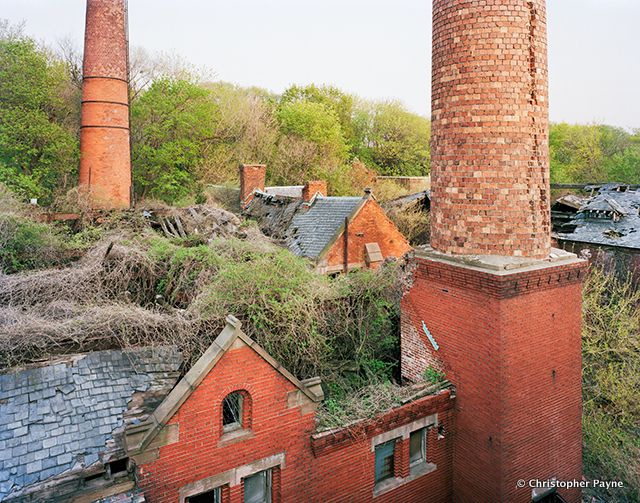
Unlike other photographers of the abandoned, the work of Christopher Payne has always been about the delicate balance between human presence and physical structure. His study of the Steinway Factory in Astoria, Queens was simultaneously a conceptual exploration of abstraction, an architectural analysis, and how Steinway workers factor into the production space. Each of the workers he photographed had a story, and together, making a piano was like a choreographed dance.
Payne’s recently released book, North Brother Island: The Last Unknown Place in New York City is clearly an evolution of Payne’s particular type of photographic discovery. Of course, there are the perfectly framed images of North Brother Island’s infamous crumbling hospitals and of its industrial gantry. Then there are the interior shots of medical rooms whose ceilings look like they might fall any second.
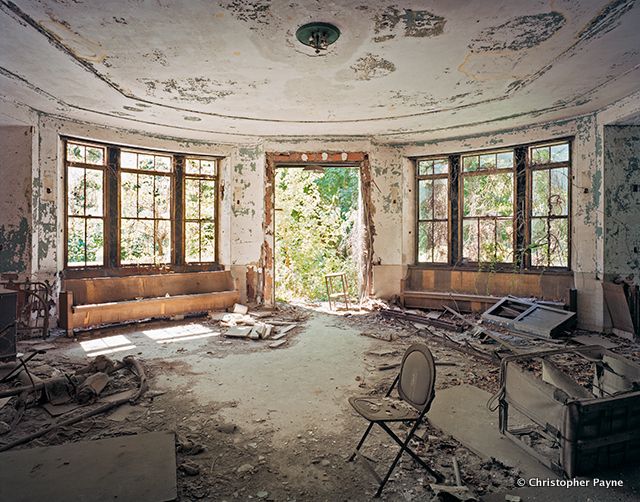
But where his work goes beyond the abandoned photography genre is Payne’s methodological tracking of changes on North Brother Island across seasons. Unlike typical trespassers, Payne had access through the New York City Parks & Recreation Department to photograph the island over the course of a year. The shattered windows of the tuberculosis pavilion become overrun by lush greenery all the way to the very top of the 5-story building in summer. A morgue that looks barren in fall looks almost welcoming in summer as the red brick contrasts against the ferns and wildflowers.
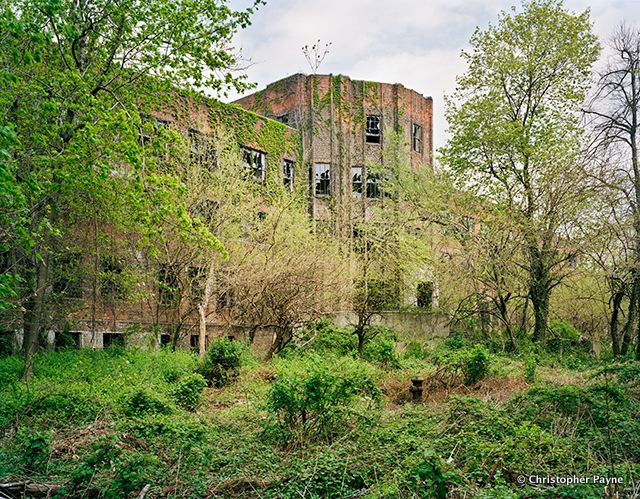
Tuberculosis Pavilion in spring
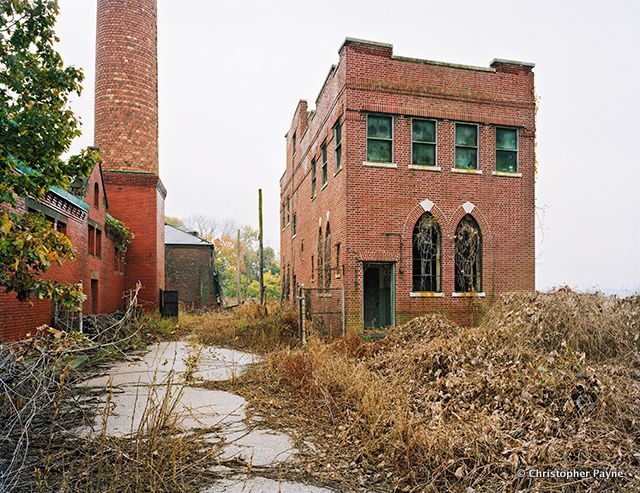
Morgue in fall
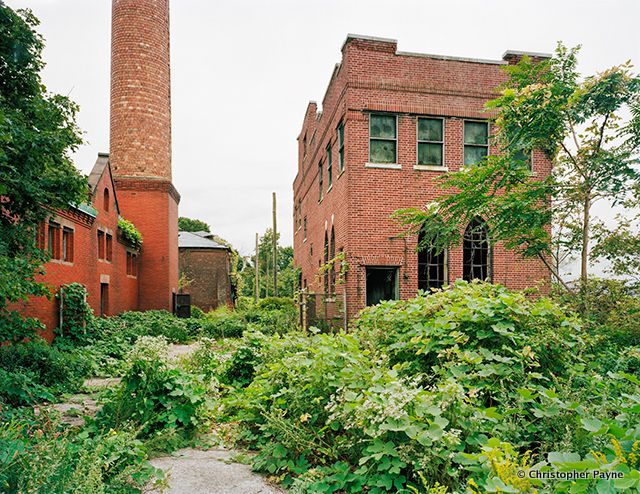
Morgue in summer
With vintage images set side by side with present-day, another underlying theme in these photos of North Brother Island is the continuing presence of humans into today. An empty, modern Budweiser can sits in a defunct refrigerator, names of visitors are carved into the walls and painted onto doors, a rusting New York City lamppost mark a former road, and panoramic photos shows the New York City skyline just peeking out above the dense forestry.
Then there is a series of portraits documenting workers from the NYC Parks Natural Resources Group, serving to destabilize us as viewers. If North Brother Island is always spoken of as “abandoned,” the presence of people actively working reminds us that there are very few places in New York City that are truly abandoned or unknown, despite the title of the book.
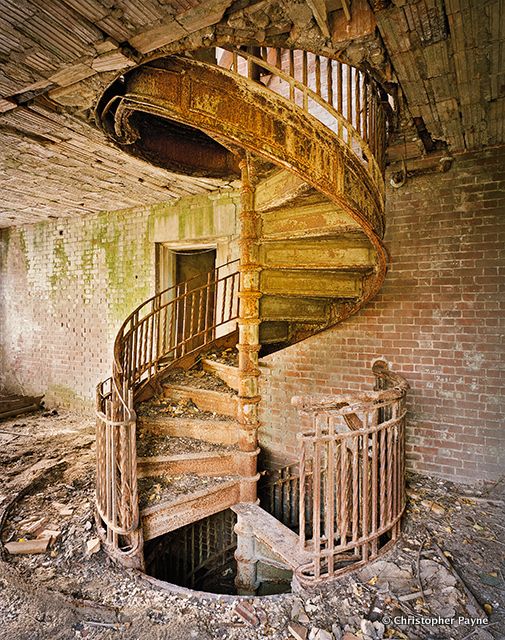
Spiral stair in Nurses Home
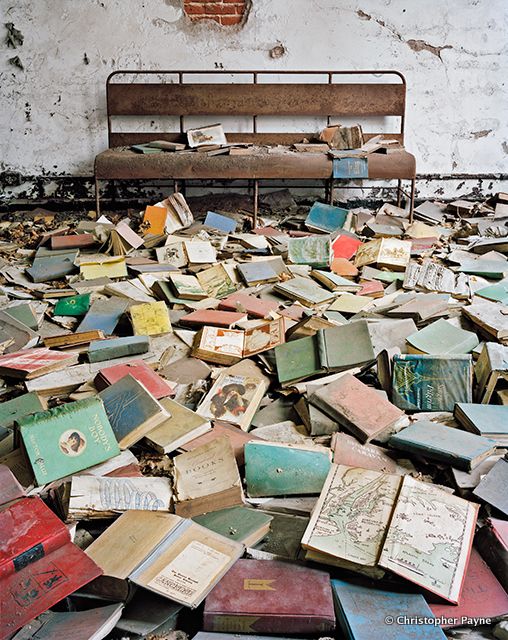
Library Books
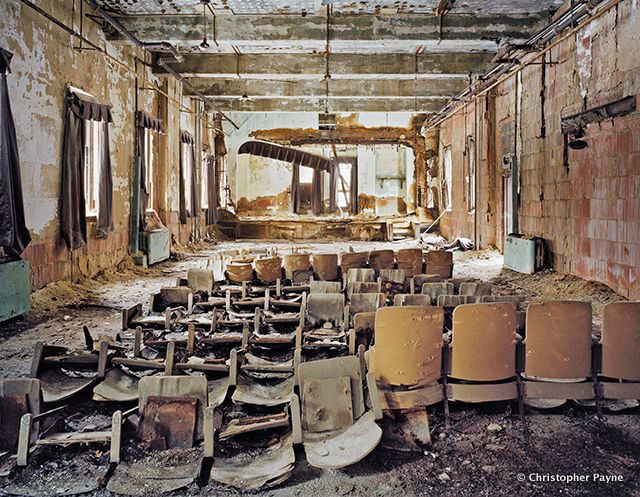
Service Building Auditorium
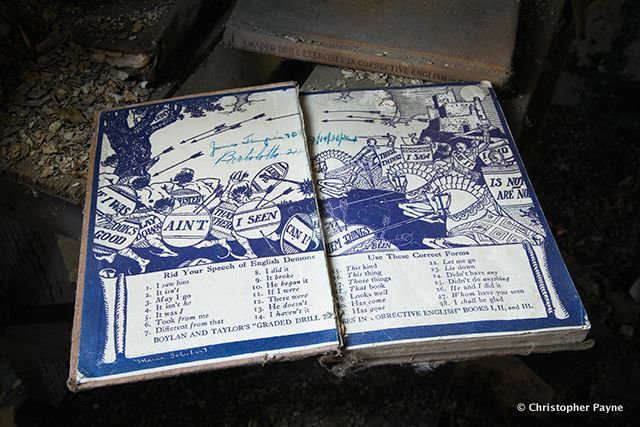
1930s English Grammar Book
With essays by Robert Sullivan, author of the fantastic New York City book, Rats, and Randall Mason, a professor at PennDesign, North Brother Island: The Last Unknown Place in New York City is truly a book for urban explorers and New York enthusiasts. In the book, Sullivan calls North Brother Island, “one of those places, an überplace, a place that helps us the city more clearly.” North Brother Island, like many of New York City’s “other islands” was very much a heterotopia–a place to put the populations that did not quite fit into the urban social landscape: drug addicts, returning veterans, tuberculosis patients and the famous Typhoid Mary. Today, it’s a managed ruin and breeding ground for the Night Heron bird population, protected under New York State and federal law. So unlike many of New York City’s islands that have been developed or may in the future, this one will stay mostly in our mind’s eye, and frozen in Payne’s beautiful book.
Get the book here and scroll down for more photos. Get in touch with the author @untappedmich.
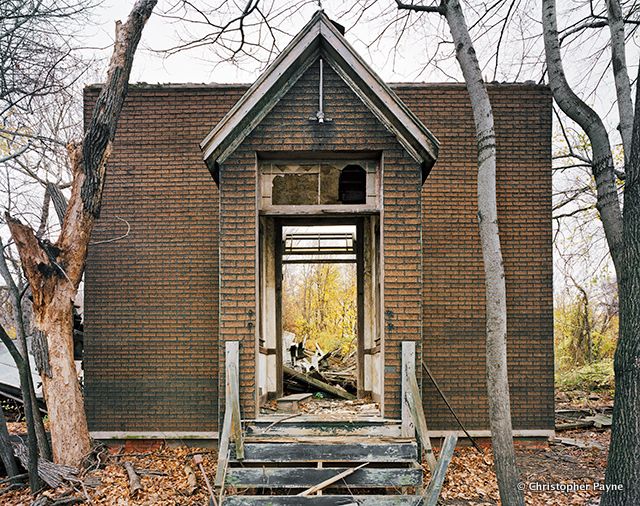
Chapel
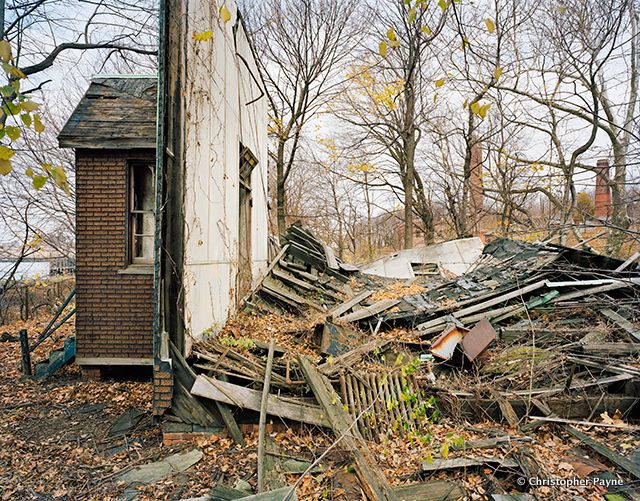
Side of Chapel
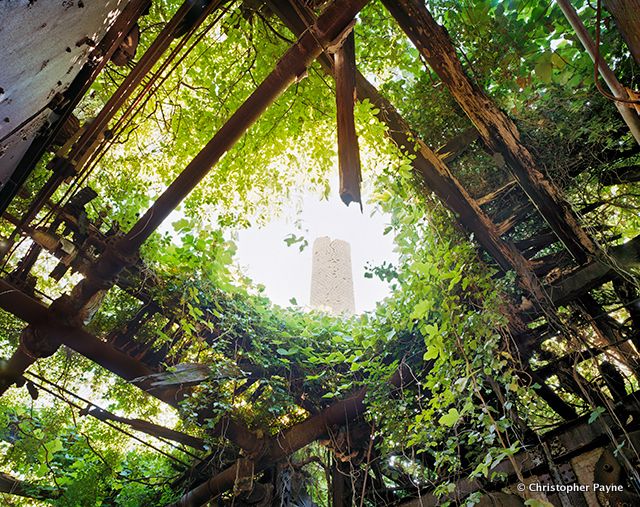
Boiler Plant, looking up through the roof
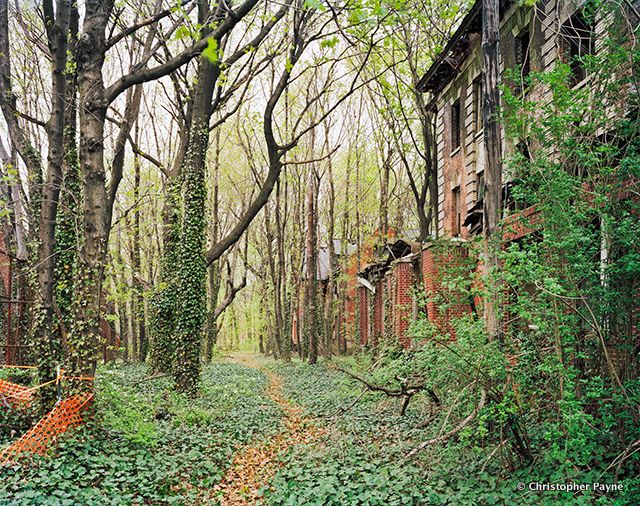
Former Street
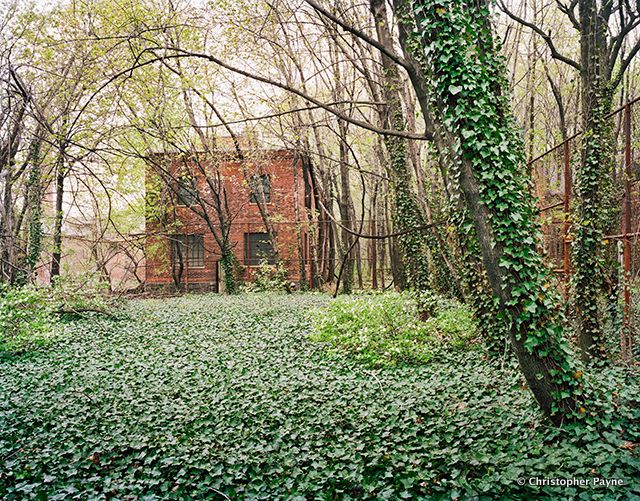
Tennis Court
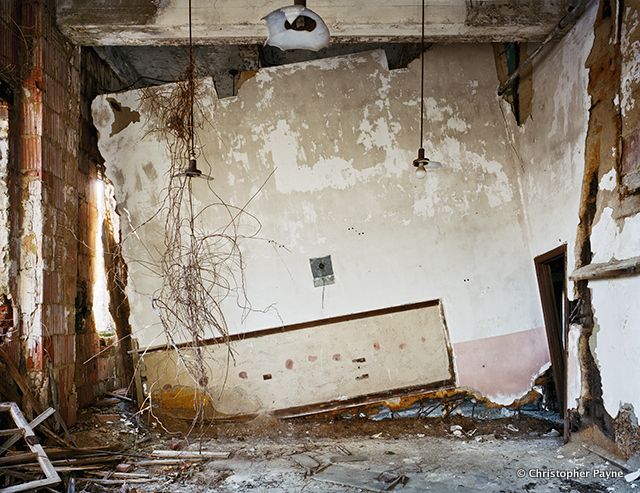
Classroom
Other book by Christopher Payne: Asylum: Inside the Closed World of State Mental Hospitals and New York’s Forgotten Substations: The Power Behind the Subway
Subscribe to our newsletter